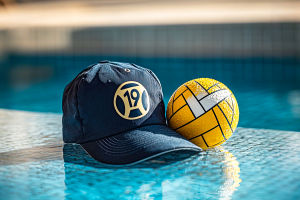Welcome, Lykkers! If darts have caught your attention, you're in the right place. This guide is designed to clear up common doubts and help both beginners and enthusiasts feel more confident around the dartboard.
Whether you're just starting or hoping to take part in global competitions, this Q&A will walk you through essential details with ease.
How to Throw Darts Properly?
The foundation of good dart playing lies in consistent form and steady practice. Begin by positioning your leading foot—the one on the same side as your throwing hand—along the throw line. The back foot should be set behind, providing balance. Maintain an upright posture, keeping the throwing shoulder aligned with the center of the dartboard.
When releasing the dart, lean slightly forward for accuracy, but ensure feet remain grounded. Use only the arm to perform the motion—avoid moving the torso or legs. Grip the dart with your preferred hand so it remains straight or slightly tilted upward. The release must be smooth to avoid unintentional direction changes. Many experienced players use chalk to improve grip control during throws.
What Darts Should Beginners Choose?
Early exposure to darts often happens in social settings. In such cases, try to use darts of equal weight and style. Inspect the tips for damage and ensure all parts are securely assembled before playing.
For personal use, beginner-friendly options made from brass are recommended. These typically weigh between 24 to 26 grams and provide a steadier throw. More advanced options, crafted from other materials, offer enhanced performance but require greater control. Prices range from modest to premium, but mid-range sets often meet beginners’ needs well. Consider visiting a store where trial options are available to find the best fit.
How to Get Started With a Dart Club?
Although darts might not receive as much visibility as some other sports, its community is steadily growing worldwide. Local federations often maintain directories to help connect new players with clubs or teams. For instance, national organizations across Europe, North America, and Asia organize leagues and provide registration details online.
A new team can be formed with a small group of enthusiasts. Regional competitions usually take place during colder seasons, often starting in autumn and concluding by late winter or early spring. Participation can lead to qualification for larger international events, such as those held by the Professional Darts Corporation (PDC), with key tournaments like the World Darts Championship happening annually around December and January.
How Much Does a Dartboard Cost?
Starting with darts doesn’t require a large budget. A good-quality dartboard meeting standard dimensions and materials can be found for around 25 to 50 dollars. These boards are durable and suitable for both practice and competitive play. For expert guidance and reliable equipment, consider specialty stores, though online platforms also offer a broad selection.
What Equipment Is Necessary to Play?
At its core, the game only requires a dartboard and darts. However, for a more refined setup, players may add items like a non-slip mat to mark the throwing line or a protective case for easy transport and storage. These extras can be helpful for those looking to improve their consistency or keep their gear organized, though they’re not essential for casual play.
Standard vs. Electronic Dartboards
One primary distinction is pricing. Traditional boards are more affordable, while electronic ones typically start at a higher cost. In return, digital models include automatic scorekeeping, game variation modes, and illuminated displays.
These features streamline gameplay and are particularly useful during group sessions or competitions. However, traditional boards remain preferred in many professional tournaments due to their durability and classic feel.
Are There Official Dart Tournaments Worldwide?
Dart competitions are held globally, with standout events such as the World Matchplay in July and the Premier League Darts running from February through May. Major contests occur in countries across Europe, Asia, and the Americas, drawing top-ranked players and significant viewership. These events follow strict regulations, and many are open to qualified amateurs who rise through local and national circuits.
Can Darts Be a Professional Activity?
For those with dedication and skill, darts can evolve into a serious competitive pursuit. While most begin playing for fun, consistent training and tournament participation can open doors to professional opportunities. Regional success may lead to entry in international rankings and televised events, especially with growing recognition across various continents.
Conclusion: Darts for Everyone
Lykkers, darts is more than just a pastime—it’s a precision sport rich with history, strategy, and international excitement. With low starting costs, a welcoming community, and tournaments year-round, it's a game anyone can explore and enjoy. Whether you aim to play casually with friends or train for worldwide competitions, darts offers a rewarding journey.


